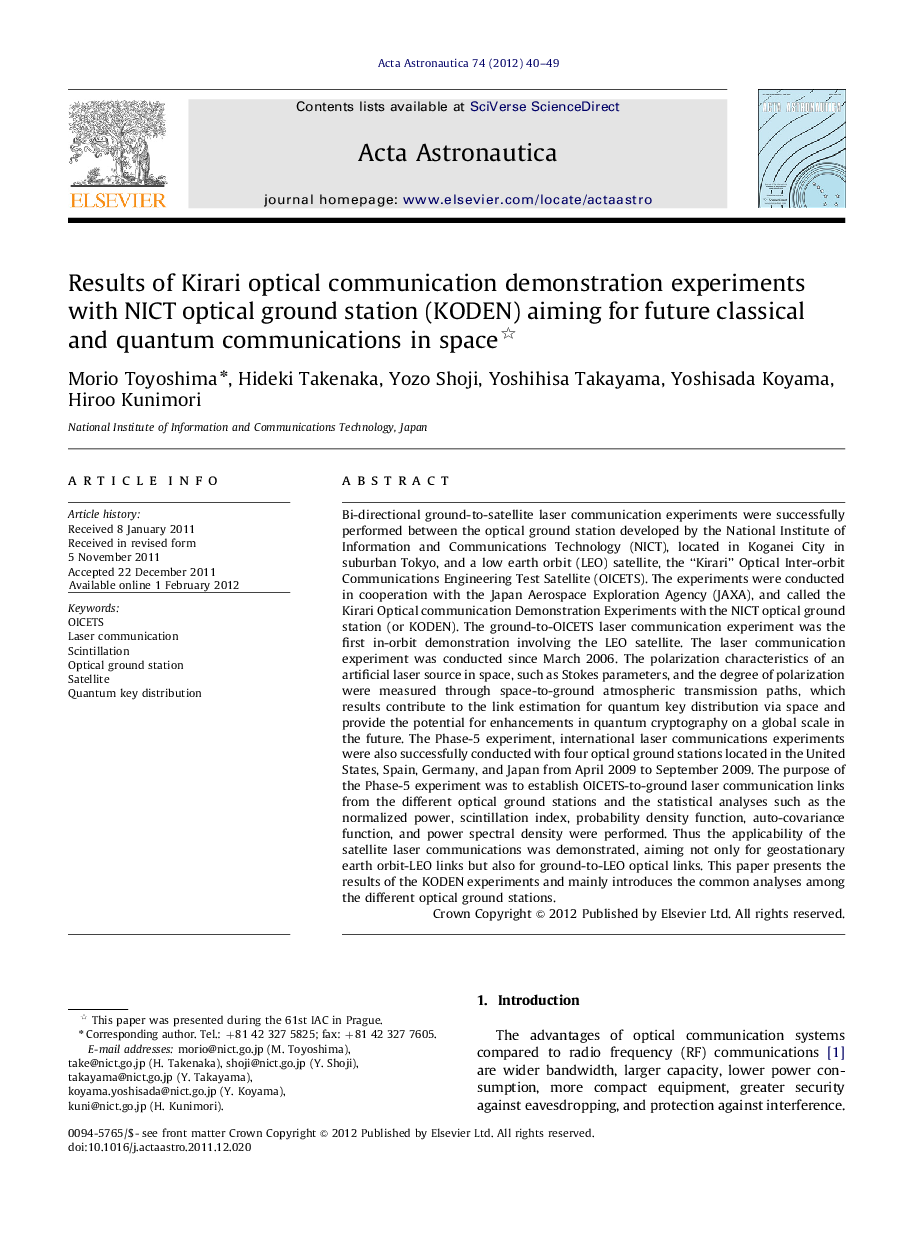| Article ID | Journal | Published Year | Pages | File Type |
|---|---|---|---|---|
| 1715415 | Acta Astronautica | 2012 | 10 Pages |
Bi-directional ground-to-satellite laser communication experiments were successfully performed between the optical ground station developed by the National Institute of Information and Communications Technology (NICT), located in Koganei City in suburban Tokyo, and a low earth orbit (LEO) satellite, the “Kirari” Optical Inter-orbit Communications Engineering Test Satellite (OICETS). The experiments were conducted in cooperation with the Japan Aerospace Exploration Agency (JAXA), and called the Kirari Optical communication Demonstration Experiments with the NICT optical ground station (or KODEN). The ground-to-OICETS laser communication experiment was the first in-orbit demonstration involving the LEO satellite. The laser communication experiment was conducted since March 2006. The polarization characteristics of an artificial laser source in space, such as Stokes parameters, and the degree of polarization were measured through space-to-ground atmospheric transmission paths, which results contribute to the link estimation for quantum key distribution via space and provide the potential for enhancements in quantum cryptography on a global scale in the future. The Phase-5 experiment, international laser communications experiments were also successfully conducted with four optical ground stations located in the United States, Spain, Germany, and Japan from April 2009 to September 2009. The purpose of the Phase-5 experiment was to establish OICETS-to-ground laser communication links from the different optical ground stations and the statistical analyses such as the normalized power, scintillation index, probability density function, auto-covariance function, and power spectral density were performed. Thus the applicability of the satellite laser communications was demonstrated, aiming not only for geostationary earth orbit-LEO links but also for ground-to-LEO optical links. This paper presents the results of the KODEN experiments and mainly introduces the common analyses among the different optical ground stations.
► Laser communications in satellite-to-ground laser links were successfully conducted. ► Experiments were successfully performed when clear sky conditions prevailed. ► Basic data of atmospheric turbulence including polarization were newly measured. ► Results contribute to standardization of the free-space laser communications. ► Polarization characteristics contribute to satellite quantum key distribution.
